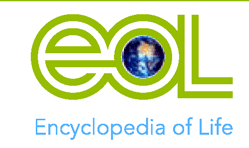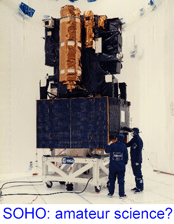 On February 27, 2008, Encyclopedia of Life (EOL), “a web page for every species” officially launched, with over 30,000 species pages, mostly fish so far, and a diversity of links to internet resources including Biodiversity Heritage Library (2.9 million pages digitized). In case you missed it, there is a thrilling, award-winning video. Following Wikipedia model, EOL users are invited to become “curators” for one or more species pages, and later this year all are invited to submit content (photos, drawing, text, video, for example) for review. For an entertaining brief history of Wikipedia and why it keeps getting better see Nicholson Baker’s review of John Broughton’s Wikipedia: The Missing Manual in March 20, 2008 New York Review of Books.
On February 27, 2008, Encyclopedia of Life (EOL), “a web page for every species” officially launched, with over 30,000 species pages, mostly fish so far, and a diversity of links to internet resources including Biodiversity Heritage Library (2.9 million pages digitized). In case you missed it, there is a thrilling, award-winning video. Following Wikipedia model, EOL users are invited to become “curators” for one or more species pages, and later this year all are invited to submit content (photos, drawing, text, video, for example) for review. For an entertaining brief history of Wikipedia and why it keeps getting better see Nicholson Baker’s review of John Broughton’s Wikipedia: The Missing Manual in March 20, 2008 New York Review of Books.
 Most near-sun comets are now discovered by amateurs, using images downloaded from the Solar and Heliospheric Observatory (SOHO), a satellite launched December 2, 1995 as part of international collaboration between European Space Agency (ESA) and National Aeronautics and Space Administration (NASA). I expect that EOL and other open-access databases will lead to many more persons contributing to biodiversity science.
Most near-sun comets are now discovered by amateurs, using images downloaded from the Solar and Heliospheric Observatory (SOHO), a satellite launched December 2, 1995 as part of international collaboration between European Space Agency (ESA) and National Aeronautics and Space Administration (NASA). I expect that EOL and other open-access databases will lead to many more persons contributing to biodiversity science.
.
.
.
.
.
I worked with the EOL before but never saw that movie before. Great movie indeed with some Dutch images from a fellow photographer Frans Lanting. Good work 🙂
Great movie. i neve saw t before.
Wow, watched the movie and I’m speechless, they put in together a lot of species! That must hard work. Good job, keep them alive! 🙂